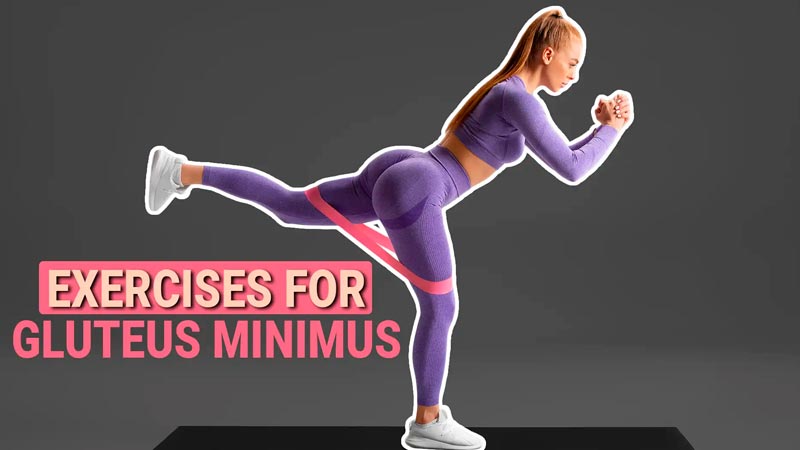The glutes are a crucial muscle group for the stability and functionality of the human body. Comprising the gluteus maximus, medius, and minimus, the latter often receives less attention than it deserves.
Table of Contents
The gluteus minimus is a small muscle located on the outer surface of the hip bone. Despite its small size, it plays a crucial role in stabilizing the hip joint and supporting the body during various movements. Weakness or tightness in this muscle can lead to a range of problems, including hip pain, lower back pain, and poor posture. Therefore, it is essential to include gluteus minimus exercises in your workout routine to keep this muscle strong and healthy.
There are various exercises that can help strengthen the gluteus minimus muscle. Some of the most effective ones include side-lying leg lifts, clamshells, and lateral band walks. These exercises target the muscle directly and can be performed with or without resistance bands. Additionally, incorporating compound exercises like squats and lunges can also help engage the gluteus minimus along with other muscles in the lower body. By regularly performing these exercises, you can improve your hip stability, balance, and overall athletic performance.
Understanding Gluteus Minimus
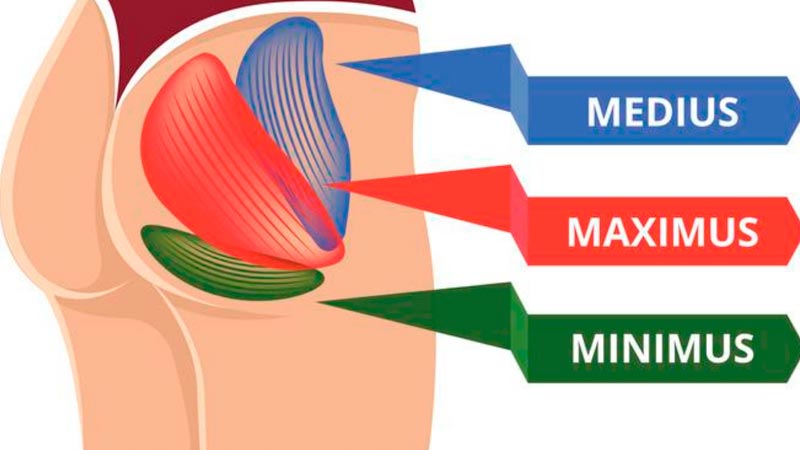
The gluteus minimus is a small muscle located in the buttocks. It is one of three muscles that make up the glutes, along with the gluteus maximus and gluteus medius. Despite its small size, the gluteus minimus plays an important role in the stability and movement of the hip joint.
The gluteus minimus originates from the outer surface of the ilium, the largest bone of the pelvis, and inserts into the greater trochanter of the femur, the bony prominence on the outside of the upper thigh bone. Its primary function is to abduct the hip, or move it away from the midline of the body. It also helps to internally rotate the hip and stabilize the pelvis during walking, running, and other lower body movements.
Weakness or dysfunction of the gluteus minimus can lead to a variety of issues, including hip pain, low back pain, and poor balance and stability. Exercises that target the gluteus minimus can help to strengthen and activate the muscle, improving overall hip function and reducing the risk of injury.
Some effective exercises for the gluteus minimus include:
- Clamshells: Lie on your side with your knees bent and feet together. Keeping your feet touching, lift your top knee as high as you can without moving your pelvis. Lower back down and repeat for several reps before switching sides.
- Side-lying leg lifts: Lie on your side with your legs straight and stacked on top of each other. Lift your top leg as high as you can without moving your pelvis, then lower back down. Repeat for several reps before switching sides.
- Lateral band walks: Place a resistance band around your ankles and stand with your feet hip-width apart. Step your right foot out to the side, then bring your left foot in to meet it. Step your left foot out to the side, then bring your right foot in to meet it. Continue walking sideways for several steps before switching directions.
Incorporating these exercises into your workout routine can help to improve the strength and function of your gluteus minimus, leading to better overall hip health and performance.
Importance of Gluteus Minimus Exercises
The gluteus minimus muscle is located on the outer surface of the hip and is responsible for stabilizing the pelvis and controlling hip movement. It is a small but important muscle that is often overlooked in traditional lower body workouts. However, incorporating gluteus minimus exercises into your fitness routine can provide numerous benefits.
One of the primary benefits of gluteus minimus exercises is improved hip stability. This muscle plays a crucial role in stabilizing the pelvis during movements such as walking, running, and jumping. Weak gluteus minimus muscles can lead to poor hip stability, which can increase the risk of injury and negatively impact performance.
In addition to improving hip stability, gluteus minimus exercises can also help to improve overall lower body strength. This muscle works in conjunction with the gluteus medius and maximus muscles to control hip movement and provide power to the lower body. Incorporating exercises that target the gluteus minimus can help to strengthen this muscle and improve overall lower body strength.
Another benefit of gluteus minimus exercises is improved balance and coordination. This muscle is responsible for controlling lateral hip movement, which is important for maintaining balance during activities such as walking on uneven surfaces or changing direction quickly. Strengthening the gluteus minimus can help to improve balance and coordination, which can translate to improved performance in sports and other physical activities.
Overall, incorporating gluteus minimus exercises into your fitness routine can provide numerous benefits. From improved hip stability and lower body strength to better balance and coordination, this small but important muscle plays a crucial role in overall lower body function.
Preparation for Gluteus Minimus Exercises
Warm-Up
Before beginning any exercise routine, it is important to perform a proper warm-up to prevent injury and prepare the body for physical activity. A good warm-up should consist of gentle movements that increase the heart rate and blood flow to the muscles. This can include light cardio exercises such as jogging, jumping jacks, or cycling.
In addition to cardio, it is also important to perform some dynamic stretching exercises to loosen up the muscles and improve flexibility. Some effective dynamic stretches for the gluteus minimus include:
- Leg swings
- Hip circles
- Lateral lunges
Performing these warm-up exercises for 5-10 minutes before beginning gluteus minimus exercises can help prevent injury and improve the effectiveness of the workout.
Equipment
To perform gluteus minimus exercises, there are a few pieces of equipment that may be helpful. While some exercises can be done with just bodyweight, others may require resistance bands or weights.
Resistance bands are a great tool for gluteus minimus exercises as they provide resistance throughout the entire range of motion, helping to strengthen and tone the muscles. Some effective exercises using resistance bands include:
- Lateral band walks
- Clamshells
- Fire hydrants
Weights can also be used to add extra resistance to gluteus minimus exercises. Dumbbells or kettlebells can be used for exercises such as:
- Single-leg deadlifts
- Bulgarian split squats
- Hip thrusts
It is important to choose the appropriate weight for each exercise to prevent injury and ensure proper form.
TOP 5 Gluteus Minimus Exercises
1. Standing Hip Abduction
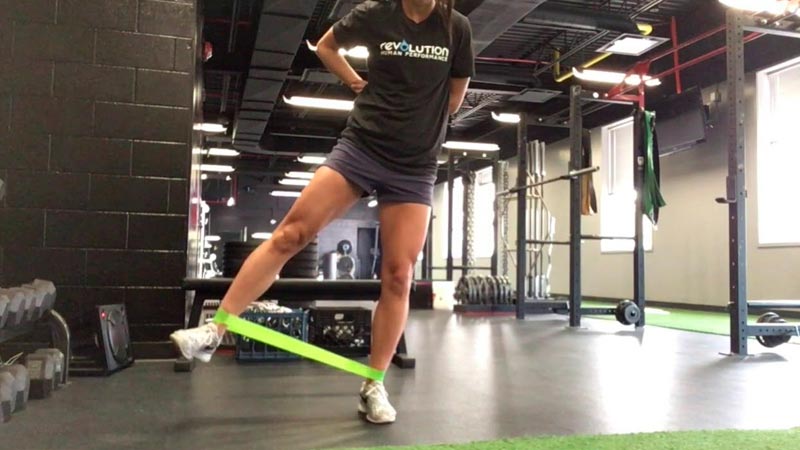
Standing hip abduction is a simple exercise that can be done anywhere. To perform this exercise, stand with your feet hip-width apart and your hands on your hips. Lift one leg straight out to the side, keeping your toes pointed forward and your knee straight. Hold for a few seconds, then lower your leg back down. Repeat on the other side. You can do it with or without elastic.
2. Side Lying Hip Abduction
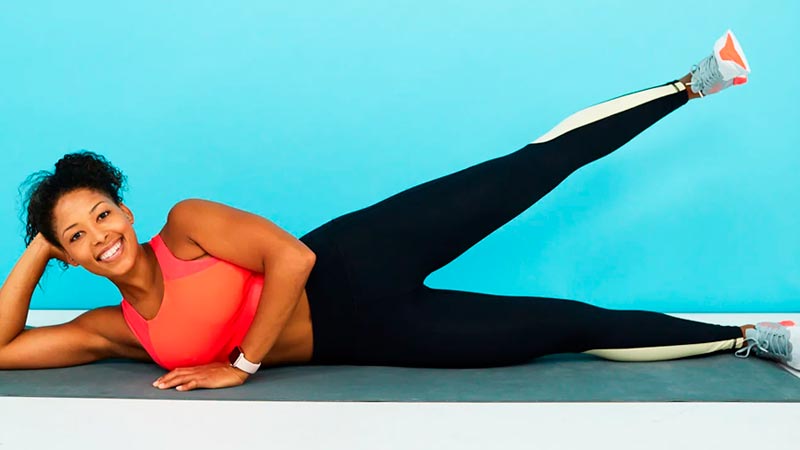
Side lying hip abduction is another effective exercise for the gluteus minimus. To perform this exercise, lie on your side with your legs straight and your feet stacked on top of each other. Lift your top leg straight up towards the ceiling, keeping your toes pointed forward and your knee straight. Hold for a few seconds, then lower your leg back down. Repeat on the other side.
3. Clamshell Exercise
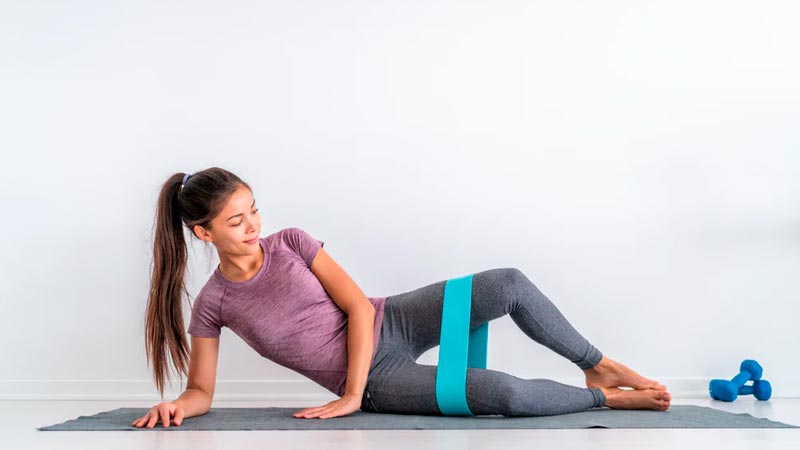
The clamshell exercise is a great way to target the gluteus minimus. To perform this exercise, lie on your side with your knees bent and your feet together. Keeping your feet together, lift your top knee up towards the ceiling, then lower it back down. Repeat on the other side.
4. Hip Bridges
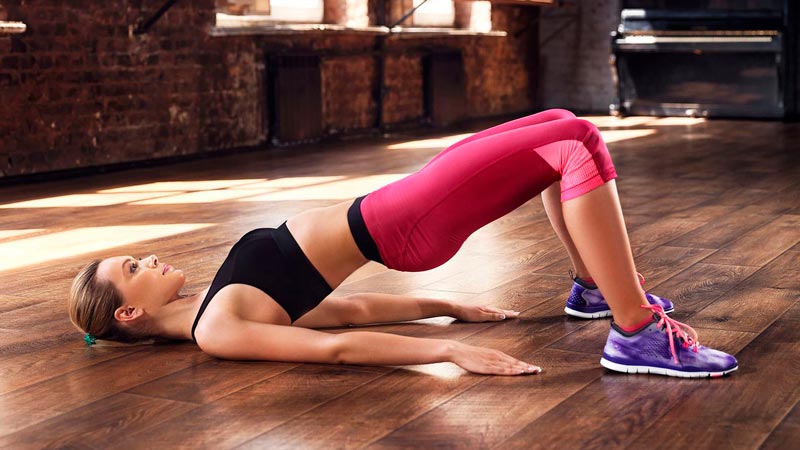
Hip bridges are a great exercise for the gluteus minimus and other muscles in the glutes. To perform this exercise, lie on your back with your knees bent and your feet flat on the ground. Lift your hips up towards the ceiling, squeezing your glutes at the top of the movement. Lower your hips back down and repeat.
5. Side Plank
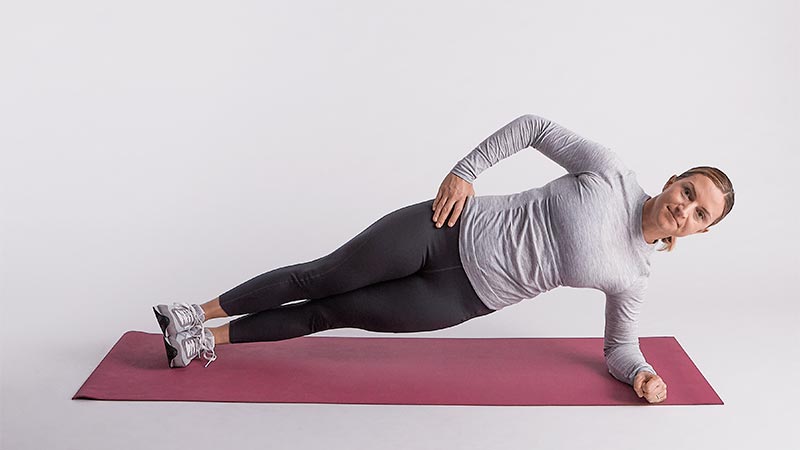
How to do it: Lie on your side with your feet stacked on top of each other. Lift your body up on your forearm and the side of your foot. Keep your body in a straight line and engage the gluteus minimus.
Overall, there are many exercises that can help strengthen the gluteus minimus. By incorporating a variety of exercises into your workout routine, you can ensure that you are targeting this important muscle group effectively.
Videos of the Gluteus Minimus Exercises
Common Mistakes and How to Avoid Them
When performing gluteus minimus exercises, it's important to avoid common mistakes that can lead to ineffective workouts or even injury. Here are some common mistakes to watch out for and how to avoid them:
Using Too Much Weight
One of the most common mistakes people make when performing gluteus minimus exercises is using too much weight. This can lead to poor form and even injury. It's important to start with a weight that is comfortable and gradually increase as strength improves. Using a weight that is too heavy can also cause other muscles to compensate, taking away from the effectiveness of the exercise.
Neglecting Proper Form
Proper form is key when performing gluteus minimus exercises. Neglecting proper form can lead to injury and decrease the effectiveness of the exercise. Common form mistakes include rounding the back, leaning too far forward, and not engaging the glute muscles. It's important to maintain a neutral spine, engage the core, and focus on squeezing the glute muscles throughout the exercise.
Not Warming Up
Warming up is an important part of any workout, including gluteus minimus exercises. Neglecting to warm up can lead to injury and decrease the effectiveness of the exercise. A proper warm-up should include dynamic stretching and movements that target the glute muscles.
Not Allowing for Rest and Recovery
Rest and recovery are essential for muscle growth and injury prevention. Neglecting to allow for adequate rest and recovery can lead to overtraining and injury. It's important to give the glute muscles time to recover between workouts and to listen to the body's signals of fatigue and pain.
By avoiding these common mistakes, individuals can ensure they are getting the most out of their gluteus minimus exercises while minimizing the risk of injury.
Measuring Progress
Measuring progress is an essential part of any fitness routine, including gluteus minimus exercises. Without a way to track progress, it can be challenging to determine whether or not the exercises are working. There are several ways to measure progress when it comes to gluteus minimus exercises.
One way to measure progress is by taking measurements of the hips and thighs. Measuring the circumference of the hips and thighs can provide a good indication of whether or not the exercises are having an impact. It is important to take measurements at the same time of day and under the same conditions for accuracy.
Another way to measure progress is by using a body fat analyzer or calipers. These tools can provide an accurate measurement of body fat percentage, which can be a better indicator of progress than weight alone. It is important to note that body fat percentage can be affected by factors such as hydration levels, so it is essential to take measurements under the same conditions each time.
In addition to physical measurements, it can be helpful to keep a workout log. A workout log can help track progress over time by recording the number of sets, reps, and weights used during each exercise. This information can be used to determine whether or not progress is being made and can help identify areas that may need improvement.
Overall, measuring progress is an important part of any fitness routine, including gluteus minimus exercises. By taking physical measurements, using body fat analyzers or calipers, and keeping a workout log, individuals can track their progress and make adjustments to their routine as needed.
Conclusion
Incorporating gluteus minimus exercises into a workout routine can have numerous benefits for overall lower body strength and stability. This muscle is often overlooked but plays a crucial role in maintaining proper hip alignment and preventing injuries.
Some effective exercises for targeting the gluteus minimus include lateral band walks, clamshells, and single-leg hip thrusts. It's important to focus on proper form and gradually increase resistance to avoid injury and ensure progress.
In addition to strengthening the gluteus minimus, these exercises can also help improve balance and coordination. They can be incorporated into a full-body workout or used as a warm-up or cool-down.
Overall, adding gluteus minimus exercises to a fitness routine can lead to improved lower body strength, stability, and injury prevention.
Stay healthy!
